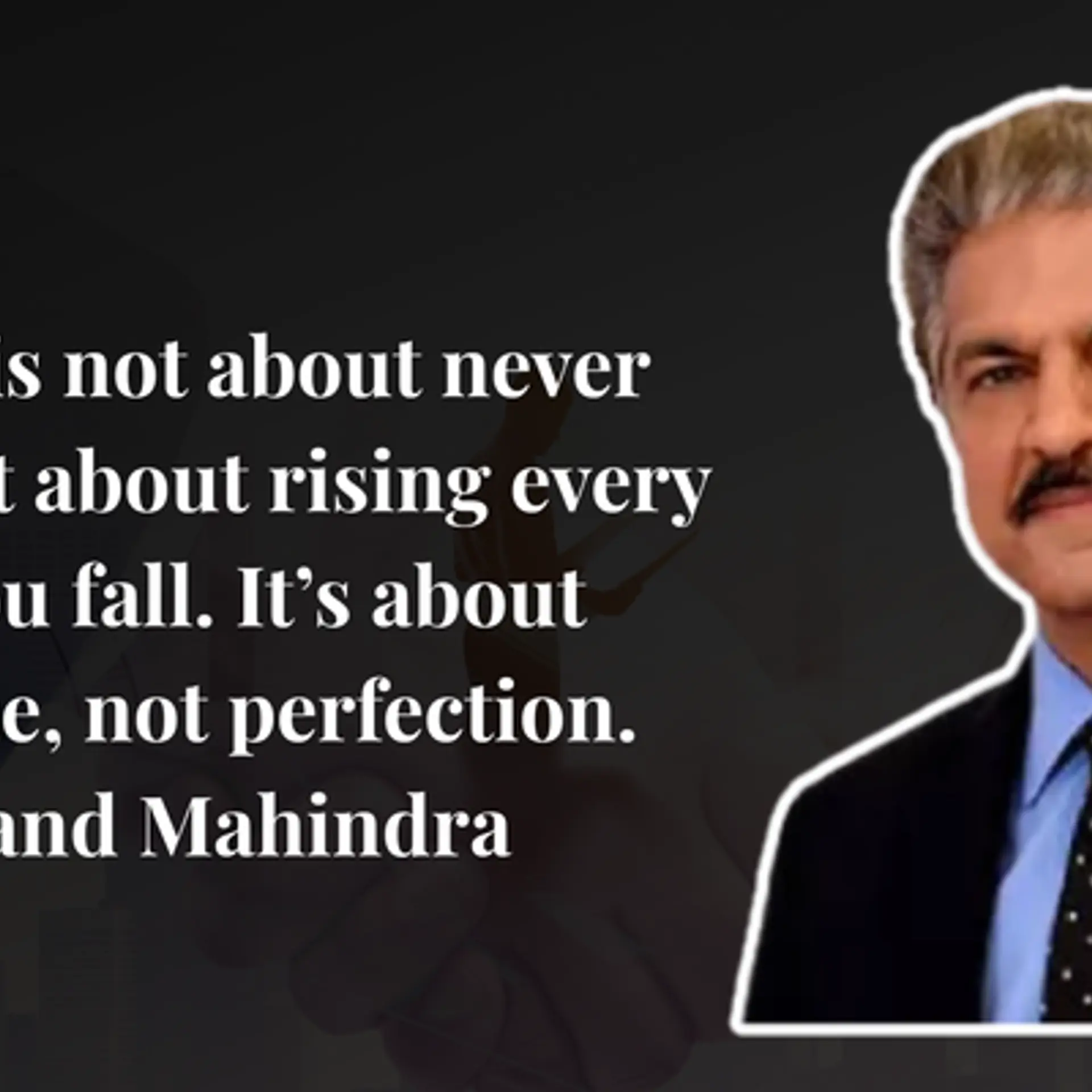The journey from a Founder to CEO.
Steve Jobs is probably the most loved innovator of our times. However, he, the founder, was asked to leave his own company. He is not the first founder and will not be the last to experience this. It is interesting to note that Jobs thought it was one of the best things to happen to him.
Recently, in India, we saw a lot being written about the founder of Housing — Rahul Yadav. Rahul had differences with his investors and was labelled as the enfant terrible of Indian startups. In the midst of whether he would stay on or not, he sent a mail to his employees saying “I am still the CEO”.
One of the most difficult questions for a startup to answer is if the founder is the right CEO at the current juncture for a company. I believe, in technology startups, it is very difficult to hire CEOs.
Ideally, the founder should be the long term CEO. The challenges come while the company is scaling aggressively. The founder runs out of the learning runway if they are not self- driving their skills. I do think founders can defer bringing in a CEO if they are self-reflective and surround themselves with a great team. It is, however, important to be intellectually honest in your self-reflection to see if you are indeed the best CEO for what the company needs. At times, this decision is essential to save your business.
The Journey
So, what changes in the journey from the founder to a CEO? The founder is an innovator, passionate about the idea and zealous about seeing it become big. He is so obsessed with the idea and making it work, that he makes deep personal sacrifices and faces insurmountable odds to bring their idea to life. Indeed, the existence of the company is not comprehensible without the founder, they are the life force.

The CEO, on the other hand, requires a very different set of skills and mindset. He has to steer the company and its people towards a common vision, create alignment and consensus. He has to sustain operational and strategic goals, take hard decisions in the process and rely on consistent processes for decision making, find and delegate to the best people and manage the crucial parameters as the organization takes off.
Over the years, I have seen founders such as Kunal Bahl of Snapdeal, successfully transitioning into a CEO. However, not all founders do that well. And there are some founders such as Reid Hoffman (LinkedIn), who have voluntarily stepped aside to let a CEO take helm while still retaining a key guiding role for the companies they founded. Such a move may be better for the long-term prospects of the company. Google offers a rare example of founders bringing in CEO (Eric Schmidt) early. In the process, they go about realizing big aspirations as founders by guiding strategy and innovation. After having gained sufficient experience, they have comeback to take the CEO’s role when they thought the time was right. Now that Google is on the next wave of growth with parent company “Alphabet” being established, they have once again brought in Sundar Pichai to become the CEO and head their core business. This would again give the founders the much required time and bandwidth to guide Alphabet.
On the other hand, some founders want to do it all by themselves and would not even contemplate the idea of bringing a CEO into their company. Many devalue the importance of delegation and the value-add that a more accomplished CEO might bring to realize their aspirations. Rarely can tech companies succeed if the founders are disengaged. So, the challenge for founders is to understand how to grow to the CEO role or how to stay relevant for the business.
Founders are, undoubtedly, people with great passion and ability to innovate. They can see beyond the horizon and are very well poised to evolve the idea. However, when there are more employees and investors on board, they may find it difficult to manage these entities and may tend to resent spending the bandwidth, ideally wanting to focus most of their time on product development and innovation. As in sports, so does in business, the best idea is to select a better leader to lead teams. The better leader isn’t necessarily the best player or the most talented. However, he is better poised to aspire, motivate, guide and lead teams in cohesion towards a common goal.
How can a founder transform himself into a good CEO? It should be a deliberated transition. Here is a checklist that founders (especially young founders) need to consider as they transition into a role model CEO for their employees and shareholders.
The Checklist
- Vision and Organization: When founders begin their journey, the organization is mostly a small group and the company is their vision. However, as the organization grows, the vision gets defused. You care about the customer, but the hundred customer service executives in the organization may not necessarily translate their everyday actions to match your commitment to make the customer happy. This is at the heart of being a CEO — institutionalization of the vision.
- Delegate and empower — Let go and scale higher: As organizations grow, smart founders must build great teams. These founders know how to focus on their areas of strength and surround themselves with senior management teams with complementing strengths and expertise. Like the conductor of an orchestra, you need to set clear goals, know when to shift people, be comfortable with a systematic planning and review process and always ensure that the organization is heading as a unit towards a goal. While the title of the CEO is attractive, many founders feel zapped by the rigor of processes that become necessary as companies and teams scale. Many founders are used to chaos and thrive in the unpredictable environments and challenges that characterize a start-up. They love the firefighting mode of jumping in to solve a problem and be the savior with the answers. Many dislike embracing systems and processes. They want to keep innovating like a free bird — unanswerable to anyone. If you are one such founder, once your company grows to a certain size, evaluate bringing a CEO or COO. This “delegate and empower” approach enables founders to transition into good CEO even as they are on their learning curve.
- Focus on creating the right culture and values: When founders start a company, they often work with a set of like-minded people and are able to manage all facets of the business. However, as the company scales, it is important to ensure that the organization goes ahead cohesively. This cohesion is brought about by the culture of the organization.
Defining and creating the organizational culture is rooted in the beliefs and personality of the founder creating the organisational DNA. The founder should essentially define and create a culture which forms the core tenets of the organization’s response. He should also set the list of values which should never be compromised.
Companies are built on culture and values — and these run top down in an organization. If the founder can build a culture of innovation, he will have a team which is in alignment with his thoughts. His management efficiency would increase automatically and it could help him transform into a good CEO.
- Create Processes and build systems to implement them: While founders love the autonomy that comes with establishing their businesses, it is important for them to put in place systems and processes that are adhered to. This creates order and discipline and enables organizations to progress in unison, in the direction of vision.
An important step in the transition from a founder to the CEO is to let go of the chaotic work styles and move towards a more organized workplace.
- Building a network of advisors and mentors: While there is no denying that founders are excellent in their own right, being a CEO requires a different set of skills. A founder, who transitions into a CEO, should build a great network of CEO mentors with whom he should constantly interact and learn. The real life use cases and insights from these CEOs will enable the founder to prepare himself better to don the CEOs hat. He can also bring in some of them on board as advisors, consultants and even board members to accelerate the growth of his company.
- Build the brand: Once the vision is established and systems and processes are in place, the organizations needs to keep adhering to the vision and keep doing what it does best till it becomes a habit. Once this habit is ensconced in the fabric of the organization, it moves positively in the direction of building a brand.

The founder, transitioning into a CEO, has to play a key role in building this brand. He should interface with key external stakeholders, important members of the industry and community and also represent the organization well to ensure that it is aptly positioned at all times. The founder who transitions into a CEO needs to understand that he is considered the face of the brand and should act accordingly. The founders who take on this responsibility often make good CEOs.
You are a founder when you start a company with an idea. A CEO, on the other hand, needs to have specific skills and leadership capabilities. Every problem is ultimately the CEOs responsibility. Not all founders can step up to that. But many founders have difficulty giving up the CEO’s title. We would all agree that CEOs of large companies don’t necessarily make good entrepreneurs. Sometimes, we need to be willing to consider that not all founders make good CEOs for large companies either.
It would be interesting to hear views from some of the renowned founders. Here’s what Mark Zuckerberg has to say on this topic.
There are certain structural advantages that founders may have that can make their jobs easier than those of non-founder CEOs — including extra social capital within a company and control of company governance. Running a company involves making a lot of trade offs between various short and long term interests. The more power you have as a CEO, the easier it is for you to do what you think is right and ignore people pushing for shorter term interests. The social capital and moral authority that comes from being the founder and having built many of the company’s key products means that on balance people trust you more and give you the benefit of the doubt when you make tough calls. Fewer people complain and take your time to manage. Fewer people quit and slow your execution. Everything is easier with social capital. Similarly, if you have control of the company — like I do at Facebook and an increasing number of founders do — then it is very difficult for investors to fire you. This means you don’t need to worry about losing your job over a couple of bad quarters or controversial short term decisions, and that makes it easier for you to make the decisions you think are correct as well. These pressures compound over time. If you have to make short term trade offs because activist investors are pressuring your board for quick financial results and you might get fired otherwise, then the compromises you make will just make it harder and harder to deliver the results you want and execute your mission over time. This eventually catches up to you unless you manage everything carefully. On the other hand, if you have the space to make controversial but good long term bets — like buying Instagram — that provides an accelerating tailwind that makes executing your mission easier over time. These are clear advantages that founders may have, but they don’t guarantee success. At the end of the day, you still need a clear vision and willingness to do what you think is right because there will always be plenty of forces pushing you to make worse trade offs regardless of your structure. There are many non-founder CEOs who are excellent at this as well as founders, and there are plenty of founders who are terrible at this despite these advantages. There’s one last thing I’d add, which is that I think people focus too much on the single CEO role and not enough on the broader team. No one builds something by themselves. We could not have built Facebook without our core team. This is not just about the founder or CEO but about the strength of the whole team.
Brian Chesky, CEO of Airbnb has an interesting viewpoint as well:
The qualities and skills that got you to this point as a startup founder won’t get you to where you need to be as the CEO of a growing organization.
When you started your business, you probably observed a problem and developed a solution to solve it. That process, in the early stages, relies heavily on your gut instinct and intuition. It is creative and exciting, and most entrepreneurs only see the potential.
As you grow into a CEO, you will experience a transition from operation by intuition to a reliance on data. Your intuition as an entrepreneur is important, but as the company grows, verifying your instinct with data is a tool that can make you an effective executive.
Strategically, the ability to analyze and interpret data will help you recognize potential opportunities that may have been unseen or will alert you to miscalculations or obstacles lining the way. Many entrepreneurs fail to make the transition because they are used to operating solely by instinct.
Based on what these two renowned founders have said (and so many others have echoed similar sentiments), there are some inherent advantages that founders carry when they prepare to transition to a CEOs role:
- The founder has the essential social capital, trust of the team, knowledge of internal dynamics and organizational awareness. Hence, when founders make tough decisions as CEOs, they often enjoy the internal social capital and support of their teams.
- Founders have more control over the company than an incoming CEO. Hence, they are better placed to handle the pressures (from some investors on the board) to deliver quick financial results. They are better positioned to take tough but right decisions for organizational growth without constantly being worried about getting fired.
An interesting characteristic of this transition is also the deep change in thought process — transition from instinct based decisions to data and fact based analytical decisions. When one is a founder of a start-up, the decisions are fast and normally based on instincts. As the organization scales and the founder prepares to be a CEO, he has to take the route of embracing “data and analytics” culture. This not only helps him validate decisions but also enables him to understand external threats to business and create strategies accordingly.
I hope start-up founders find this checklist useful when they decide to make this all important transition. If you are a start-up founder, please write to us at team@kstartcapital.com with your views on the most important items that this checklist should contain.







